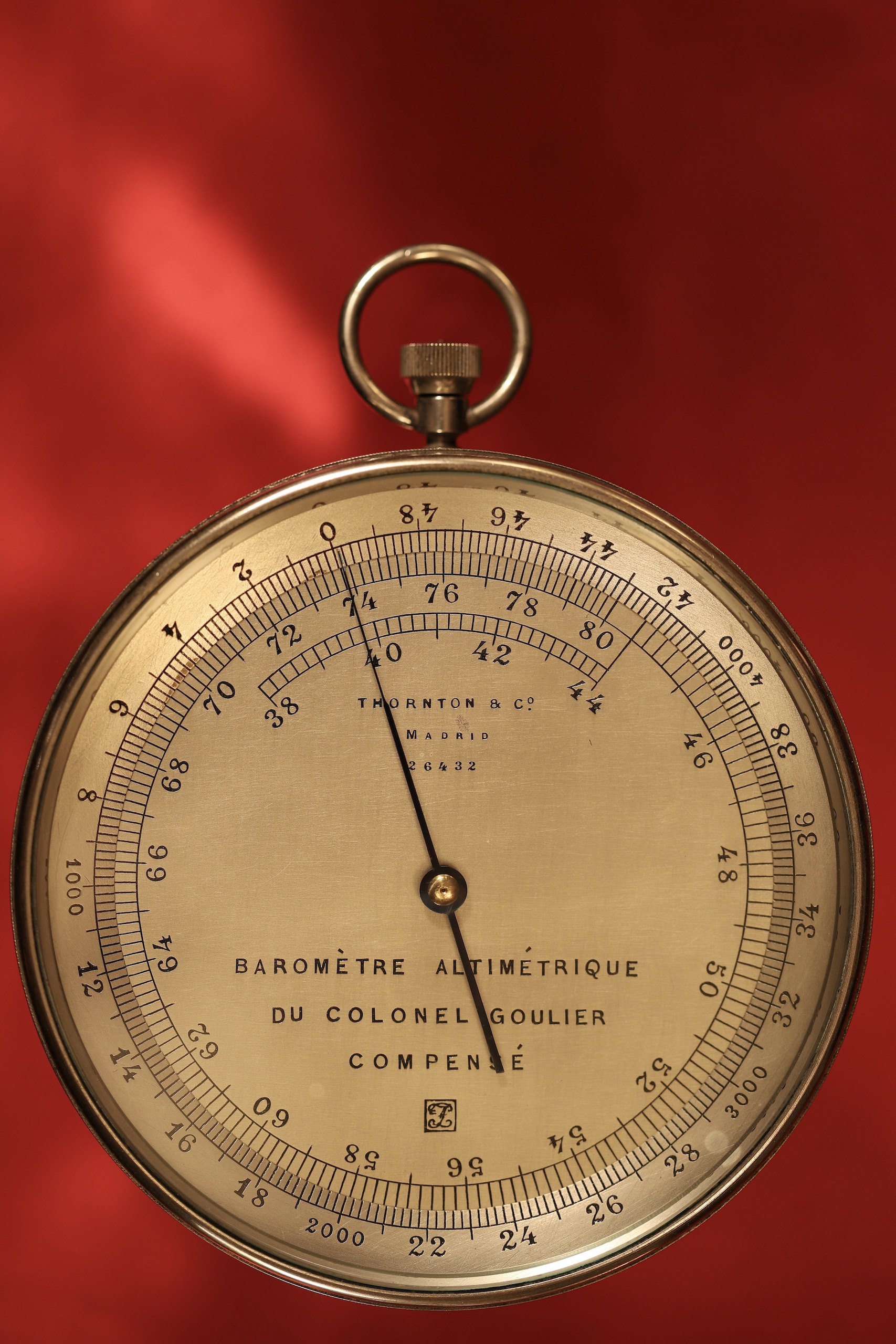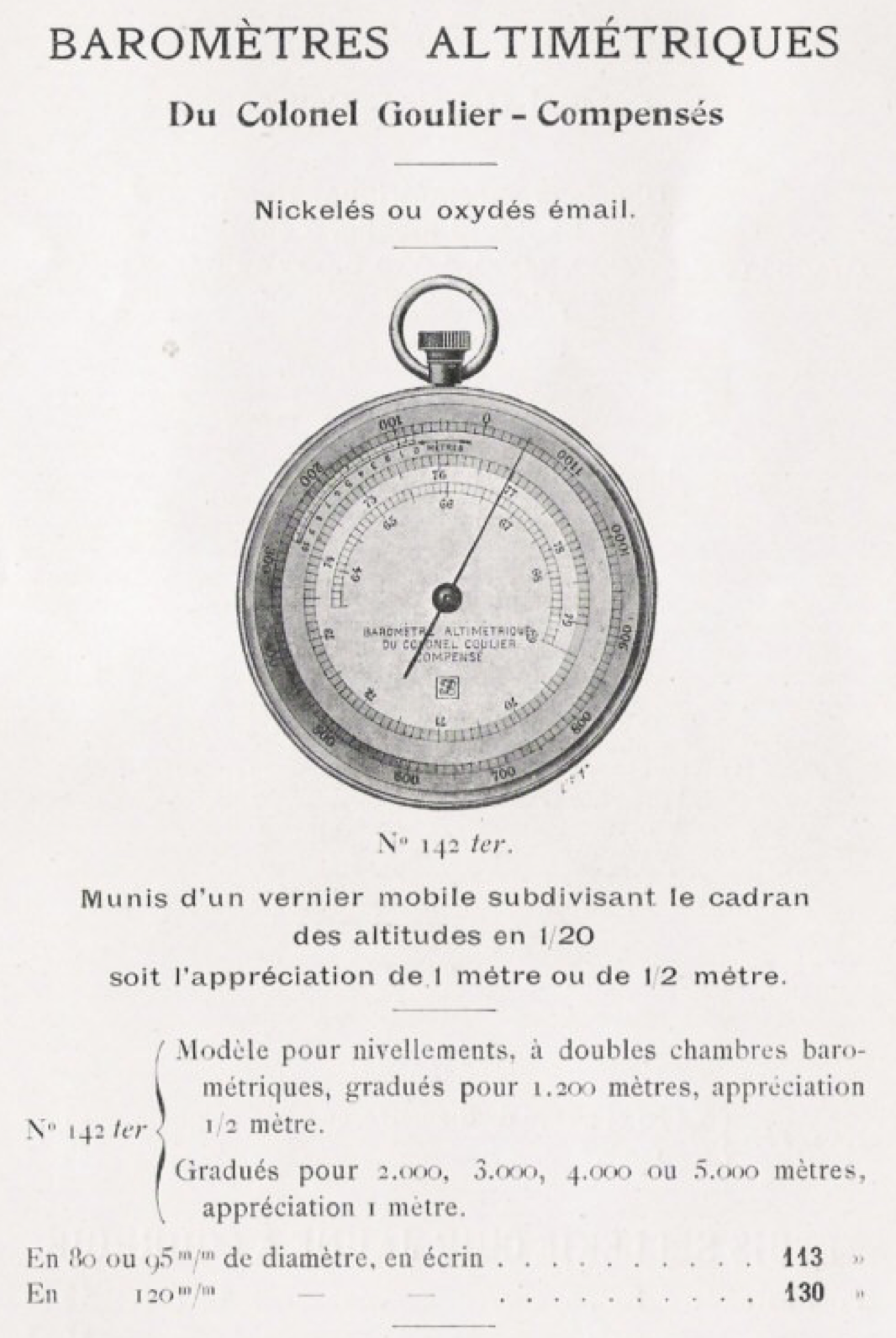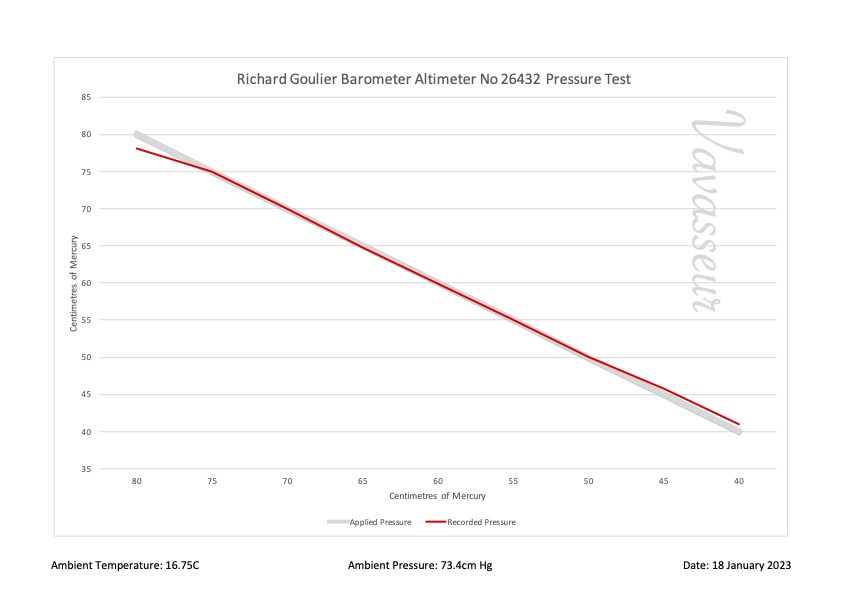An exceptionally rare and finely executed nickel plated brass cased compensated aneroid barometer altimeter calibrated to the Goulier pattern by Jules Richard No 26432 retailed by Thornton & Co, Madrid, c1900
Altimeter having 4½” silvered and engraved dial, the outer crown rotated altimetric scale calibrated in metres with a range from 0 – 4,800m and divided to 100m, the inner calibrated in centimetres of mercury with a range from 38cm – 80cm and divided to 2cm. The upper part marked “Thornton & Co, Madrid,” with serial no. “26432,” the lower part further marked “Baromètre Altimétrique Du Colonel Goulier,” and “Compensé,” together with Jules Richard logogram. Blued steel knife pointer under heavy bevelled glass.
Highly refined precision movement constructed in bronze, aluminium, brass and iron, driven from a single 2¼” nickel alloy capsule tensioned on a coil spring, the signal transmitted from a C form bridge to the rack and pinion through a cruciform rocking component, the top and bottom extensions swinging about finely set pivots, the left hand with static mass/counterbalance, the right hand with finely ground pin and platform connection. The rack set in fine vertically arranged pivots and rotated from a vertical pin bearing on a fine section formed and extending from its base.
All contained within a substantial drum form nickel plated brass case with ribbed decoration, extension post with crown and suspension ring, the verso with calibration port.
Condition: The subject of a full service, conservation, and calibration under laboratory conditions. The movement complete, clean and working well across to full scale deflection, see performance chart.
Completely original, both dial and altitude ring in exceptional condition, very minor losses, minor marks, and some signs of ageing. The original glass remaining chip free and clear. The case worn overall, losses including abrasions, wear, and some signs of the plate lifting. Overall quite presentable.
Comments: Just three of these instruments are recorded, one being serial no. 28236. This is an exceptionally rare piece – the dial serial number is misleading as the serial numbering is a running series of instruments including many different types. The scratched Roman numeral character “VI” seems a more likely value associated with what must have been very limited production. In any event, this was not a cheap instrument, and with its obvious professional/scientific designation the uptake might have been modest. Precise numbers made will almost certainly remain illusive, that said my feeling is that no more than a few hundred might have been completed.
The movement is the star of this piece. It is obvious that the maker has gone to great lengths to achieve the greatest in accuracy, employment of the Goulier scale which essentially takes into account the non linear pressure gradient with altitude whilst also accounting for air temperature, the interesting selection of materials but perhaps above all the great care taken to eliminate as much static friction as possible. The reversion to the coil spring in tensioning the capsule is in itself more than interesting. Many will appreciate the surprising accuracy and great sensitivity of the Vidi made instruments that were imported into the UK by Dent, the vast majority of which all conformed to the coil spring pattern – the coil spring is actually in many ways the best though most expensive option. The overall design of this instrument is an interpretation of the original Vidi pattern, though very much refined.
In lots of ways this is an instrument that ticks the boxes: very good aesthetics, rare, certainly collectable, and of course it retains function. As always with such instruments, in my opinion very much undervalued.
After graduating from the Ecole Polytechnique in Engineering, Colonel Charles-Moÿse Goulier (1818-1891) taught topography at the School of Artillery and Engineering (1844-1875) first at Metz, then at Fontainebleau. Then, from 1875 to 1891, he directed the central repository of precision instruments, initially attached to fortifications and from 1885 to the Geographical Service of the French Army. Goulier’s many innovations appear in an array of fields, including range-finding, surveying and mining, cartography and aviation.
Dimensions: 4¾" diameter x 1¾" deep
Stock No: BA2159
Price: SOLD


